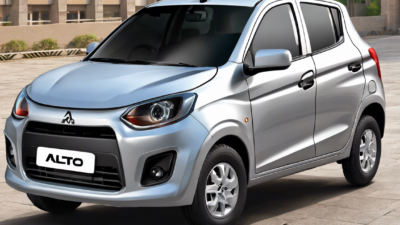In the vast world of coffee, there is a lesser-known variety that has been gaining attention among coffee enthusiasts for its unique flavor profile – Blue Coffee. This distinctive strain of coffee offers a taste experience that sets it apart from the more common Arabica and Robusta beans. In this article, we will delve into the intricate details of Blue Coffee, exploring its origins, cultivation methods, flavor characteristics, and why it has captivated the taste buds of many coffee connoisseurs.
Origins of Blue Coffee
Blue Coffee, also known as Blue Mountain Coffee, derives its name from the Blue Mountains of Jamaica, where it has been cultivated for centuries. The cool climate, rich soil, and high altitudes of the Blue Mountains provide the ideal conditions for growing this unique coffee variety. The beans are grown at elevations between 3,000 and 5,500 feet, which contributes to their exceptional flavor profile.
Cultivation of Blue Coffee
The cultivation of Blue Coffee is a meticulous process that requires careful attention to detail. Farmers in the Blue Mountains use traditional methods of cultivation, including hand-picking the ripe coffee cherries to ensure only the highest quality beans are selected. The beans are then sun-dried and meticulously sorted to remove any defects, resulting in a superior coffee product.
Flavor Characteristics of Blue Coffee
One of the most remarkable features of Blue Coffee is its flavor profile. Blue Coffee is renowned for its smooth, mild taste with a subtle sweetness and floral notes. The coffee is characterized by its well-balanced acidity and full-bodied texture, creating a truly exceptional cup of coffee. The flavor profile of Blue Coffee is often described as complex and nuanced, with layers of citrus, cocoa, and spice notes that delight the palate.
Why Blue Coffee Stands Out
Blue Coffee stands out from other coffee varieties due to its exceptional quality and unique flavor profile. The combination of high altitude cultivation, optimal growing conditions, and careful processing results in a coffee that is truly distinctive. The limited availability of Blue Coffee further adds to its allure, making it a sought-after choice for coffee lovers who appreciate the finer things in life.
How to Enjoy Blue Coffee
To fully appreciate the flavors of Blue Coffee, it is recommended to brew it using methods that highlight its delicate nuances. Pour-over and French press brewing methods are particularly well-suited for Blue Coffee, as they allow the flavors to fully develop without overpowering the subtle notes. Brewing Blue Coffee with precision and care will ensure that you experience the full range of flavors that this exceptional coffee has to offer.
Pairing Blue Coffee with Food
The unique flavor profile of Blue Coffee makes it a versatile option for pairing with a variety of foods. Its mild sweetness and floral notes complement pastries and desserts beautifully, while its full-bodied texture pairs well with savory dishes such as grilled meats or cheeses. Experimenting with different food pairings can enhance the tasting experience and bring out the best in Blue Coffee.
Frequently Asked Questions (FAQs) about Blue Coffee:
-
What makes Blue Coffee unique?
Blue Coffee is unique due to its cultivation in the Blue Mountains of Jamaica, where the high altitudes and ideal growing conditions contribute to its exceptional flavor profile. -
Is Blue Coffee the same as Blue Mountain Coffee?
Yes, Blue Coffee is often referred to as Blue Mountain Coffee due to its origins in the Blue Mountains of Jamaica. -
Where can I buy Blue Coffee?
Blue Coffee can be purchased from specialty coffee shops, online retailers, and select cafes that offer premium coffee selections. -
Does Blue Coffee have a high caffeine content?
Blue Coffee typically has a moderate caffeine content, similar to other Arabica coffee varieties. -
How should Blue Coffee be stored to maintain freshness?
Blue Coffee should be stored in an airtight container in a cool, dark place to preserve its freshness and flavor profile. -
Is Blue Coffee more expensive than other coffee varieties?
Yes, Blue Coffee is considered a premium coffee variety and is often priced higher than other common coffee beans due to its limited availability and exceptional quality. -
Can Blue Coffee be used in espresso drinks?
Yes, Blue Coffee can be used in espresso drinks to create rich and flavorful coffee beverages. -
What is the best way to grind Blue Coffee beans?
Blue Coffee beans are best ground just before brewing to preserve their freshness. A medium-fine grind is recommended for most brewing methods to extract the optimal flavors. -
Are there different grades of Blue Coffee available?
Yes, Blue Coffee is graded based on the size and quality of the beans, with higher grades typically commanding a higher price due to their superior flavor characteristics. -
Is Blue Coffee sustainable and environmentally friendly?
Coffee farms in the Blue Mountains often adhere to sustainable farming practices to protect the environment and ensure the long-term viability of coffee cultivation in the region.
In conclusion, Blue Coffee is a truly exceptional coffee variety that offers a unique and unforgettable tasting experience. From its origins in the Blue Mountains of Jamaica to its meticulous cultivation and distinctive flavor profile, Blue Coffee continues to captivate coffee lovers around the world. Whether enjoyed on its own or paired with delicious foods, Blue Coffee is a testament to the artistry and craftsmanship that goes into producing a truly exceptional cup of coffee.



